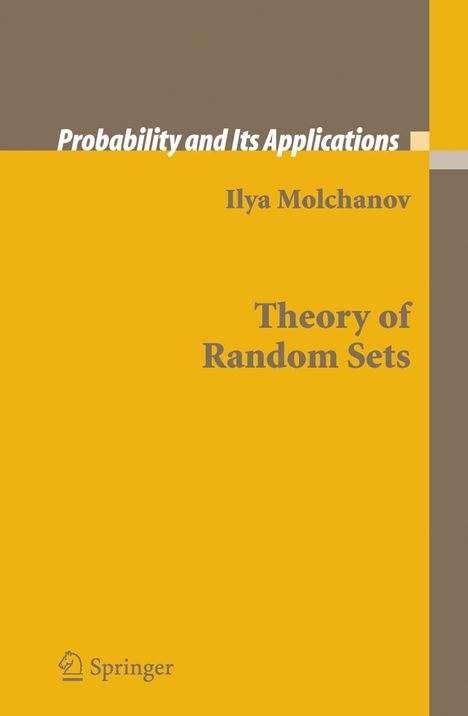Ilya Molchanov: Theory of Random Sets, Kartoniert / Broschiert
Theory of Random Sets
(soweit verfügbar beim Lieferanten)
- Verlag:
- Springer London, 03/2012
- Einband:
- Kartoniert / Broschiert, Paperback
- Sprache:
- Englisch
- ISBN-13:
- 9781849969499
- Artikelnummer:
- 8870056
- Umfang:
- 504 Seiten
- Sonstiges:
- 33 SW-Abb.
- Nummer der Auflage:
- 2005
- Ausgabe:
- 2005
- Copyright-Jahr:
- 2010
- Gewicht:
- 754 g
- Maße:
- 235 x 155 mm
- Stärke:
- 26 mm
- Erscheinungstermin:
- 14.3.2012
- Hinweis
-
Achtung: Artikel ist nicht in deutscher Sprache!
Beschreibung
This is the first systematic exposition of random sets theory since Matheron (1975), with full proofs, exhaustive bibliographies and literature notes
Interdisciplinary connections and applications of random sets are emphasized throughout the book
An extensive bibliography in the book is available on the Web at and is accompanied by a search engine
Inhaltsangabe
Random Closed Sets and Capacity Functionals.- Expectations of Random Sets.- Minkowski Addition.- Unions of Random Sets.- Random Sets and Random Functions. Appendices: Topological Spaces.- Linear Spaces.- Space of Closed Sets.- Compact Sets and the Hausdorff Metric.- Multifunctions and Continuity.- Measures and Probabilities.- Capacities.- Convex Sets.- Semigroups and Harmonic Analysis.- Regular Variation. References.- List of Notation.- Name Index.- Subject Index.
Klappentext
Stochastic geometry is a relatively new branch of mathematics. Although its predecessors such as geometric probability date back to the 18th century, the formal concept of a random set was developed in the beginning of the 1970s. Theory of Random Sets presents a state of the art treatment of the modern theory, but it does not neglect to recall and build on the foundations laid by Matheron and others, including the vast advances in stochastic geometry, probability theory, set-valued analysis, and statistical inference of the 1990s.
The book is entirely self-contained, systematic and exhaustive, with the full proofs that are necessary to gain insight. It shows the various interdisciplinary relationships of random set theory within other parts of mathematics, and at the same time, fixes terminology and notation that are often varying in the current literature to establish it as a natural part of modern probability theory, and to provide a platform for future development.



